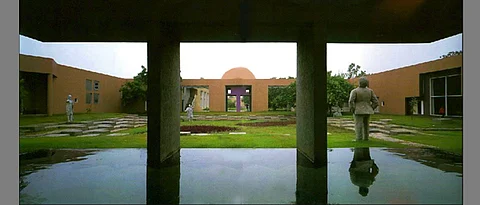

Pune: Inter-University Centre for Astrophysics and Astronomy (IUCAA) will be building a camera for Indian Science and Research Organisation's (ISRO) Sun mission Aditya, which is scheduled to be launched in August 2019.
While talking exclusively to Sakal Times, IUCAA Director Somay Raychaudhury said, "We have been building the camera for ISRO's Sun mission. The camera would orbit at one place instead of rotating around it."
The camera will image the spatially resolved Solar Photosphere and Chromosphere in near Ultraviolet (200-400 nm) and measure solar irradiance variations. A Memorandum of Understanding (MoU) has been signed between IUCAA and ISRO and an AstroSat support cell has also been set up here.
The satellite is expected to take about 90 days to reach its desired orbit at about 1.5 million kilometres away from the Earth. It will be positioned at the Lagrangian point L1 where the gravity of Sun and Earth will be near null, making observations possible without a break.
There will be seven payloads (instruments) on board the satellite. One of them is the Solar Ultraviolet Imaging Telescope (SUIT), which is being designed and developed at IUCAA.
Raychaudhury said, "One of the main payloads will be designed and developed at this centre. What gives IUCAA an edge over several other national institutes, who are a part of this mission, is that it houses both the scientific and the instrument design teams under one roof. The teams have been working together in envisaging and designing the SUIT since 2013. ISRO had opened up the opportunity for AstroSat and built 2.5 tonnes of GSLV for them."
"According to the MoU, we have to provide the science output for them," he said, adding, "For first two years after its launch in September 2015, ISRO had not given any access to others, but in October, it has opened it for Indian Science community and the observing time will be awarded on the basis of peer-reviewed proposals."
Besides that, IUCAA would be coordinating for the world's largest optical telescope, which is being built by India, Japan, China, Canada and USA and is expected to be ready by 2028.
He said, "This is a Department of Science and Technology funded project, which is likely to come up at the Canary Islands in Spain. It was to come at Hawaii islands, atop a mountain, but since the local people objected to it, it has been relocated," he said, adding, "India has 10 per cent share in the world's largest telescope called Salt, which is located in South Africa.
IUCAA is coordinating between Salt and Indian research universities. Similarly, we have been following up with our Saraswati discovery, an extremely large supercluster of galaxies - as big as 20 million billion suns."
Big projects lined up
- Aditya-L1, India's maiden mission to the Sun, will be launched in 2019.
- A Memorandum of Understanding between ISRO and IUCAA for the operation of the AstroSat Support Cell has been signed.
- ISRO, in collaboration with the Inter-University Centre for Astronomy and Astrophysics (IUCAA), Pune, has set up an AstroSat Support Cell (ASC) to facilitate the proposal making process and the use of AstroSat data. The cell will operate out of IUCAA and will provide resource material, tools, training and help to guest observers.
- The second edition of India's moon mission, Chandrayaan II, is scheduled for launch in March 2018.
